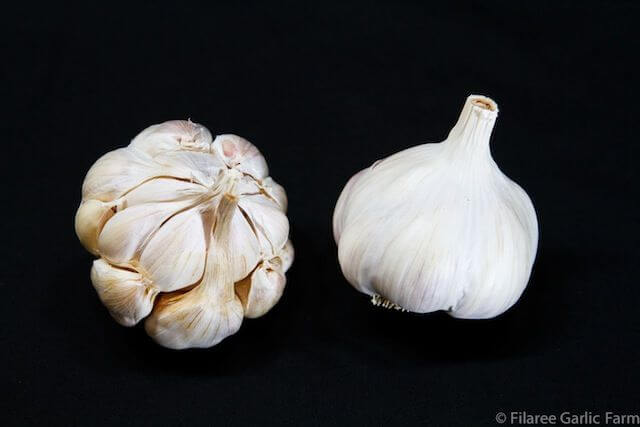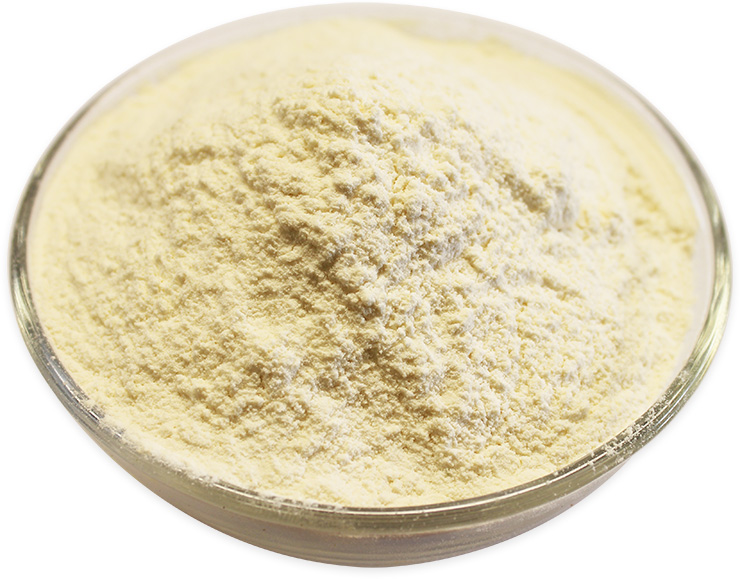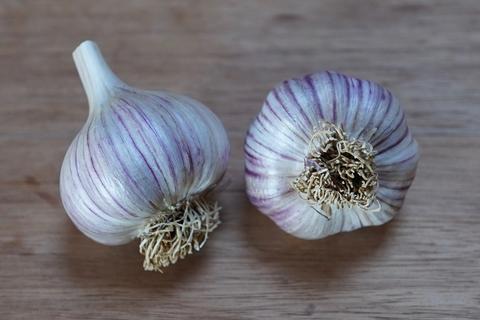Flies are a nuisance for all ranchers and cattle producers. Unfortunately, they can be a strain on your profitability in addition to being a nuisance. By consuming blood meals, spreading diseases, and generating overall irritation and stress with incessant buzzing, flies can impair development performance. Although exact figures are difficult to come by, some studies burden US cattle ranchers at much over $1.5 billion each year.
In addition to conventional fly control methods, some beef farmers have opted to use bulk garlic powder as a natural alternative. Garlic-fed cattle produce an odor that repels flies from their skin and breath. It has the potential to be a safe, natural, and simple option that is compatible with specialist diets like grass-fed and organic. It’s also inexpensive, costing between $0.01 and $0.02 per person every day.


How does Bulk Garlic Powder work for Cattle?
Not just garlic powder, cattle producers are also shifting to the use of bulk garlic salt, organic garlic powder bulk, and bulk garlic cloves to help their cattle fight off multiple infections.
Garlic’s ability to repel flies is due to its inherent defensive mechanism. When the bulbs of a garlic plant are disturbed, such as crushed or sliced, a chemical reaction occurs inside the plant, releasing sulfur-based compounds with a pungent odor that helps repel pest infestations.
Can repel pests
When an animal eats bulk peeled garlic or garlic powder, it acquires these sulfurous substances, which can repel pests when the odor is released through the animal’s skin and breath. In addition, the odor repels flies, causing them to land on the animal less frequently. In comparison to control groups, Durunna’s research indicated a more than 50% reduction in flies on calves treated with garlic powder.
Internal fly control can be highly beneficial. “I used to use a fly spray on the cows and wondered why it didn’t work on warm days,” McKinney, who lives in Kansas, explained. “It turns out the cows were cooling off in the creek, which washed away the fly spray. I don’t have to worry now that they’re eating garlic since they’ve got fly control on the inside.”
The chemistry that underpins it all is a little more intricate. Garlic’s defensive mechanism is triggered when the sulfurous compound alliin reacts well with enzyme alliinase to produce the pungent chemical allicin. On the other hand, Allicin is unstable and can swiftly degrade into more stable allyl sulfide derivatives such as diallyl disulfide, diallyl tetra sulfide, and diallyl trisulfide.
Role of Bulk Garlic Powder For Cattle
There are numerous advantages to using garlic powder in cattle feed. Cattle develop quickly and require a lot of food. Therefore, minerals, vitamins, trace elements, and allicin (garlic powder) should all be added to cow feed during the growing phase. This type of feeding can help beef cattle grow faster while also reducing the occurrence of certain diseases.
Enhance feed digestion and absorption; reduce bowel odor, improve shed environment; high-efficiency antibacterial sterilizing Not just for cattle, but also for poultry, pigs, aquaculture, and other livestock.
Anti-Microbial Activity of Garlic in Bulk Garlic Powder
Several studies have suggested that producers could use plant oils and/or their constituents for medicinal purposes and the food sector to combat germs that cause food degradation (Cantore et al., 2009). We now know that essential oils and plant extracts have extensive antibacterial and antifungal activity against Gram-positive and Gram-negative bacteria. For example, garlic oil has antibacterial properties (Feldberg et al., 1988), and a high number of garlic powder may cause ruminal fermentation problems.
There wasn’t much information regarding the use of bulk garlic powder in cattle feed to deter flies a few years ago.
However, some scattered material online regarding producers who had effectively utilized garlic powder to minimize bug load – a substantial cause of stress that can influence animal production.
Following that, word of mouth spread, and Western Canadian landowners began to request garlic as part of their mineral program.
The Co-op Ruminant Nutritionists heard the pleas but wanted to make sure that producers weren’t overpaying for garlic, so they started testing several garlic products in Saskatchewan and Alberta in 2014. Logan Williams, M.Sc., P.Ag., a Ruminant Nutritionist with Co-op, did some trial research on the role of bulk garlic powder in cattle development.
A Co-op team, led by Ruminant Nutritionist Amanda Van De Kerckhove, found the best results in their experiments with a product produced from pure garlic oil, with evidence of improved mineral intake.
The study inspired the team to develop a Co-summer op’s mineral program, including comprehensive dairy cattle minerals and garlic premixes.
One of those products, CO-OP® Beef Cattle 2:1 Summer Mineral, was also used in a Saskatchewan Ministry of Agriculture experiment in 2017. According to the study, when producers gave cattle the summer nutrient with garlic, average fly counts reduced from 158 to 67 per cow. In addition, a higher intake of the summer mineral was also discovered in the study, with an aggregate of 113 grams each day versus 44 grams per day for a trace mineral product without garlic.


FAQs About Bulk Garlic Powder
What is the composition of garlic powder?
Garlic powder contains 73 percent carbs (containing 9% dietary fiber), 17 percent protein, 1% fat, and 6% water. Garlic powder contains 332 calories per 100-gram serving and is high in vitamin C (30 percent DV), thiamin (31% DV), vitamin B6 (147 percent DV), and many dietary minerals, all of which provide 20% or more of the Daily Value (DV).
What effect does garlic have on cattle?
Garlic-fed cattle produce an odor that repels flies from their skin and breath. It has the potential to be a safe, natural, and simple option that is compatible with specialist diets like grass-fed and organic. It’s also inexpensive, costing between $0.01 and $0.02 per user every day.
Is garlic effective against flies?
Garlic is naturally repellent to flies, which you may take advantage of. If you notice insects gathering at different spots all around the exterior of the building or in your cattle area, you can use your own handmade garlic-based fly repellent to spray those areas.
What is the best way to feed garlic to cattle?
Although there is no one-size-fits-all integration rate, most producers employ a 1-2 percent inclusion rate for their free-choice mineral. When feeding mineral with a coal consumption of 4 ounces per day, a 2% inclusion would amount to one pound of garlic every 50 pounds of mineral or 2.3 grams of garlic per head per day.
Summary: Role of Bulk Garlic Powder in Cattle Field
Including bulk garlic powder in your cattle mineral diet, 30 days before the fly season begins and 30 days after the fly season end, for the most robust defense against flies. Also, make sure the cows get exposure to the garlic mineral regularly and don’t spend more than a few days without it.
Keep in mind that cows with a larger frame or a higher BCS may require a greater inclusion rate because they do not consume as many minerals per pound of body weight as younger animals.
Mixing garlic with a powdered or fragmented free-choice mineral is the most popular way to feed bulk garlic powder as a natural fly repellent.
